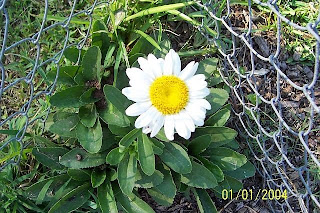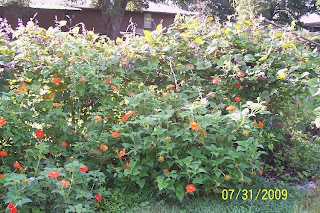
On one side of my yard I had an unsightly area along the fence that needed to be filled this summer. I proceeded to plant some annuals there for now until I could fill the fence with some perennial vines and maybe put some shrubs there. I put in 3 clumps of hyacinth bean vines. They quickly began growing and covering fence. I also scattered quite a few annual seeds of various types - this was to be survival of the fittest. Shortly after planting all the seeds, our 6 week drought began and my Tithonias (Mexican sunflowers) were the only plants to survive other than one or two Victoria Blue salvias which are hard to find in the thicket of tithonia. I now have a jungle of tithonia and hyacinth bean vines growing in the area. It looks okay and the purple and orange fit surprisingly well together. Here are a couple of pictures. In the future, I may plant dwarf tithonias to stop them from falling over as much. The hummingbirds absolutely love this area as do the butterflies.



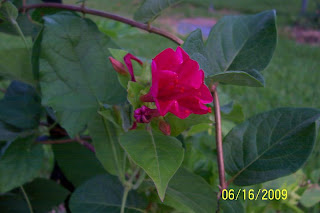
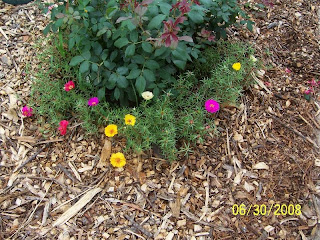
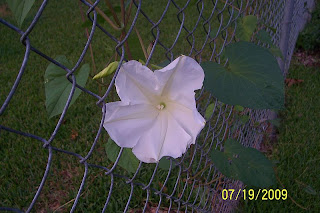
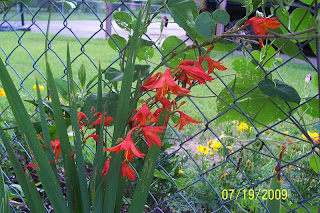


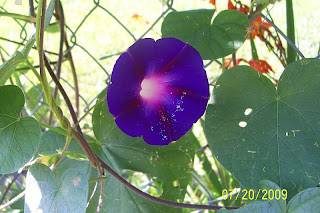





+07-19-09.jpg)







